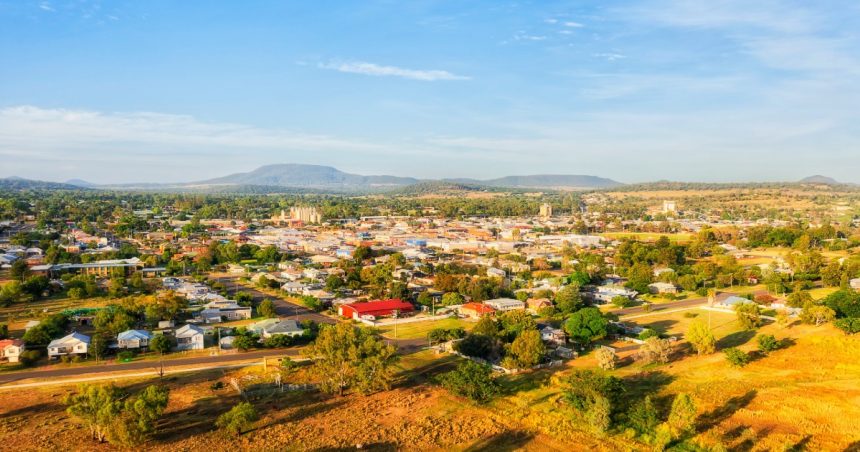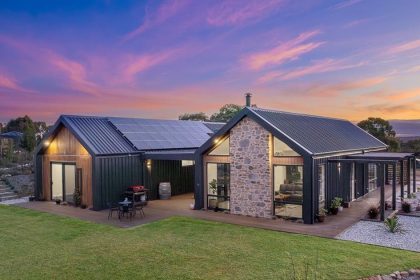Expanding regional towns could be the missing piece of the puzzle in solving Australia’s housing crisis, according to one of Australia’s leading urban planning experts.
Over the past several years, Aussies have battled a housing crisis like never before, with home values reaching record levels, interest rates pushing thousands of Aussies into mortgage stress, and even more renters facing homelessness as a result of vacancy rates.
The federal government has set an ambitious plan to build more than 1.2 million homes by the decade’s end. However, current build rates are far off the pace needed to achieve this goal, while rising building costs see construction companies going bust by the day.
Meanwhile, the lead industry body, Master Builders, warns the nation will also need to attract 480,000 new workers into the sector within the next two years to reach this target.
That’s without mentioning house prices across most of Australia’s capitals, reaching unaffordable levels for the average home buyer, with the median Sydney home now costing an eye-watering $1.6 million.
So that begs the question… how can we solve a problem like Australia’s housing crisis?
Urban planning experts say a renewed focus capitalising upon the existing infrastructure in regional centres could help Australia build its way out of its housing problem before it’s too late.
Sam George is a principal and urban planner at Hatch –a global multidisciplinary in planning, urban design, engineering, infrastructure, and commodities– and says that building mixed-density housing solutions in more regional areas would help solve some of the affordability problems hampering Australia’s home building needs.
He told Build-it that the established services and infrastructure in those regions, alongside cheaper land and construction costs, would make them an ideal solution that would help keep costs low, thus attracting new buyers to the area.
“There are hundreds of regional towns across Australia within a couple of hours drive from a major city that is prime real estate for master-planned communities as they have existing infrastructure and immense revival potential,” he said.

“In NSW, Maitland region in the Hunter Valley is a great one as house medians are roughly half that of Sydney and nearby Muswellbrook is even cheaper.”
“Being close to major metropolitan areas means these regions and the small villages in and around them offer exceptional opportunities for creating thriving communities as they aren’t just blank slates—they’re already equipped with essential infrastructure, and they provide a far more affordable lifestyle.”
According to Domain Group’s latest house price data quarterly report, regional centres on the outskirts of Sydney still offer outstanding value and affordability compared to the state capital.
Median property prices in the Armidale region are still only $465,000, while on the Central Coast, North Gosford median property prices are $770,000, and in the Hunter Valley, it’s $700,000.
But its not just Australia’s most expensive capital that would benefit from the expansion of regional hubs, with Sam also identifying areas such as Wallan in Victoria (just 50km from the Melbourne CBD), Queensland’s Toowoomba (under two hours from Brisbane) and WA’s inland hubs of Busselbrook and Mundijong (around 60km from Perth CBD) as prime locations for regional expansion and investment.
“These are the towns and regions we need to be looking at. For young Australians particularly, the hurdle to first home ownership has never been higher, and it’s pushing more and more buyers further out of metropolitan markets,” he told Build-it.
“These regional towns that sit in that 200-300km radius of major hubs can and should be a key pillar to solving the affordable housing crisis as future-proofing those regions and creating a master-planned community such as Huntlee benefits everyone.”
Two birds, one blueprint
It’s not just Australia’s housing supply problem that the expansion of regional centres could help fix up.
Building up home construction in regional areas could also help improve in-demand tradie numbers and fill skills gaps across some of the most in-need areas of the country.
While the opportunity in growing regional hubs could see the development of vocational education and training resources within the region, providing a conveyor belt of future workers for the sector.
Sam told Build-it that delivering masterplanned regional townships could generate an economic revival and bring a wealth of employment opportunities that more than just bridge the skills gap.
“The beauty of reviving our regional towns and transforming them into affordable, connected and community-centric hubs is people will want to live there long term and raise a family. And this is where liveable design is the cornerstone to success,” he explained.







